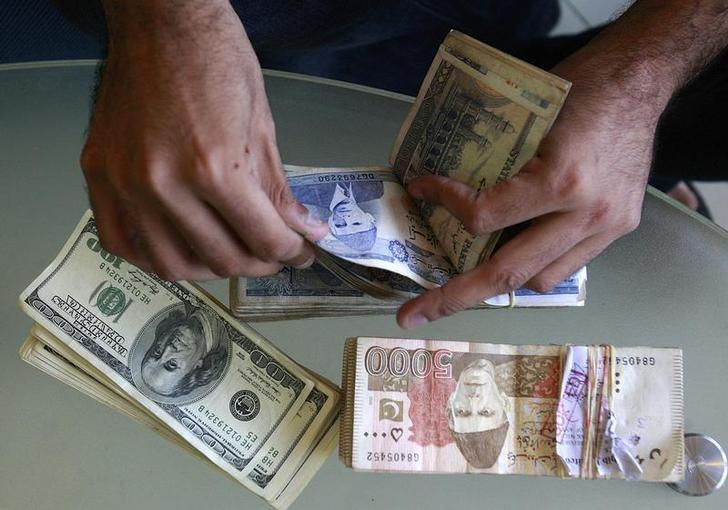
Rising trade and current account deficits and declining foreign currency reserves were cited as major contributing factors to the rupee’s weakness.
The real effective exchange rate is an index used to measure the export competitiveness of goods produced in Pakistan. The rate, 100 at the base year of 2010, was reported at more than 123 in October 2017 by the State Bank of Pakistan (SBP), suggesting that there was a strong preference for the consumption of imported goods in Pakistan.
Interestingly, the nominal effective exchange rate, which does not take price differentials across countries into account, was reported at 89 in October 2017 and has never exceeded 100 since 2010. This suggests that price levels in Pakistan are typically higher than those in trading partners, implying lack of export competitiveness of the goods produced domestically.
One of the most compelling challenges the economic policymakers face is to increase the competitiveness of domestic producers, particularly as the government seeks to stimulate industrial activities and induce business confidence before the upcoming general elections.
Cumulative exports between July and November 2017 were higher than those in the same period of 2016 and 2015. On the other hand, the deficit in November 2017 was over 34% higher than in the same period of 2016.
Though the export growth was positive in July 2017 – the first instance since July 2014, the increase in imports overwhelmed the rise in exports.
Such trade policies should be adopted that improve long-run competitiveness of domestic industries – but not on the basis of restrictive trade policies – and increase exports if Pakistan is to permanently reduce the imbalance in its external accounts.
According to the SBP, total export receipts rose 12% in July-November FY18 with support from all commodity groups.
On the other hand, import payments increased more than 23% between July and November FY18 compared to the same period of FY17. The growth in imports was primarily driven by the demand related to the China-Pakistan Economic Corridor (CPEC).
Interestingly, imports of raw cotton dropped more than 43%, suggesting that the demand for domestic varieties of cotton may surge again as the harvest has improved somewhat.
Pulses’ imports also dropped by more than 23%, indicating improvement in agriculture production as well as growth in domestic agro-based industries.
Trade deals
The government is negotiating free trade agreements (FTAs) in order to give a boost to exports. On the other hand, the FTAs can also lead to a surge in imports.
However, this increase may not necessarily have an adverse impact on the economy. FTAs may not only provide greater varieties to the consumers, but can also give easier access to foreign raw material and intermediate goods needed for domestic industrial production and increasing value addition in the country.
The GSP Plus status awarded to Pakistan by the European Union in 2014 has provided a boost to exports of readymade garments and other finished textile products to the 28-nation bloc.
On the other hand, the FTA with China provides not only access to relatively cheaper imports of capital and intermediate goods, but also creates opportunities for Pakistani firms to participate in global value chains with companies based in the manufacturing hub of the world, China.
Several countries that are considered as export powerhouses report a large trade deficit with China. They benefit by adopting viable trade policies.
The writer is Assistant Professor of Economics and Research Fellow at CBER, IBA
Published in The Express Tribune, January 8th, 2018.
Like Business on Facebook, follow @TribuneBiz on Twitter to stay informed and join in the conversation.

















COMMENTS
Comments are moderated and generally will be posted if they are on-topic and not abusive.
For more information, please see our Comments FAQ